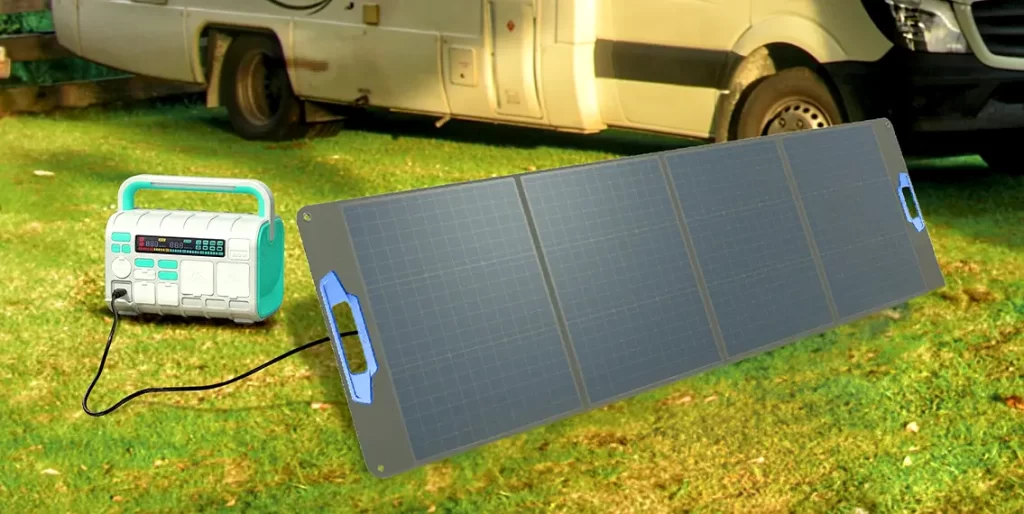
Connecting a solar panel to a power station (also known as a solar generator) is a relatively straightforward process, but it requires attention to detail to ensure everything works correctly and safely. Here’s a step-by-step guide to help you through the process:
Materials Needed:
- Solar Panel: Ensure your solar panel is compatible with your power station in terms of voltage and wattage.
- Power Station: A portable power station that stores solar energy.
- MC4 Connectors: Standard connectors used for solar panels.
- Adapter Cables: These may be necessary to connect the solar panel to the input ports of the power station.
- Extension Cables (optional): If you need to place the solar panel further away from the power station.
Steps to Connect Solar Panel to Power Station:
- Check Compatibility:
- Verify that the solar panel’s voltage and wattage are within the input range of your power station. Most power stations have a specific input voltage range, usually between 12V and 48V.
- Check the connectors. Most solar panels use MC4 connectors, but your power station might have a different type of input port. You may need an adapter cable to match these connectors.
- Position the Solar Panel:
- Place the solar panel in a location where it will receive maximum sunlight. Ideally, this should be a spot with direct sunlight for most of the day.
- Ensure the panel is angled correctly to capture the most sunlight. Some panels come with adjustable stands to help with this.
- Connect the Solar Panel to the Power Station:
- Identify the Positive (+) and Negative (-) Terminals: Solar panels and power stations usually have clearly marked positive and negative terminals.
- Connect the MC4 Connectors: Attach the positive (usually red) MC4 connector from the solar panel to the positive input on the adapter cable. Do the same for the negative (usually black) connector.
- Adapter Cable to Power Station: Plug the other end of the adapter cable into the solar input port of the power station. Ensure the connectors are firmly attached to avoid any loose connections.
- Secure the Connections:
- Ensure all connections are tight and secure to prevent disconnections or electrical issues.
- If using extension cables, make sure they are rated for outdoor use and can handle the current and voltage from your solar panel.
- Turn On the Power Station:
- Once everything is connected, turn on the power station. Most power stations have an indicator that shows when they are receiving power from the solar panel.
- Check the display (if available) on the power station to ensure it is charging correctly. It should show the input wattage from the solar panel.
- Monitor the Charging Process:
- Keep an eye on the power station’s charge level. Most power stations will automatically stop charging once the battery is full.
- Make sure the solar panel remains in direct sunlight and adjust its position if necessary to maintain optimal charging efficiency.
Safety Tips:
- Avoid Water: Ensure that all connections are dry and avoid placing the solar panel or power station in areas where they might get wet.
- Use Proper Cables: Use cables and connectors that are specifically designed for solar applications to ensure safety and efficiency.
- Regular Maintenance: Periodically check the connections and clean the solar panel surface to ensure it remains efficient.
Troubleshooting Tips:
- No Power Input: If your power station is not showing any power input, double-check all connections. Ensure that the solar panel is receiving sunlight and that all cables are properly connected.
- Low Power Input: If the power input is lower than expected, it could be due to shading on the solar panel, dirty panel surfaces, or suboptimal panel angle. Adjust the panel position and clean the surface as needed.
- Overheating: Ensure that the power station is placed in a shaded area to prevent overheating, especially if it’s charging for extended periods.
By following these steps and tips, you can effectively connect your solar panel to your power station, providing a reliable source of renewable energy for your needs.





